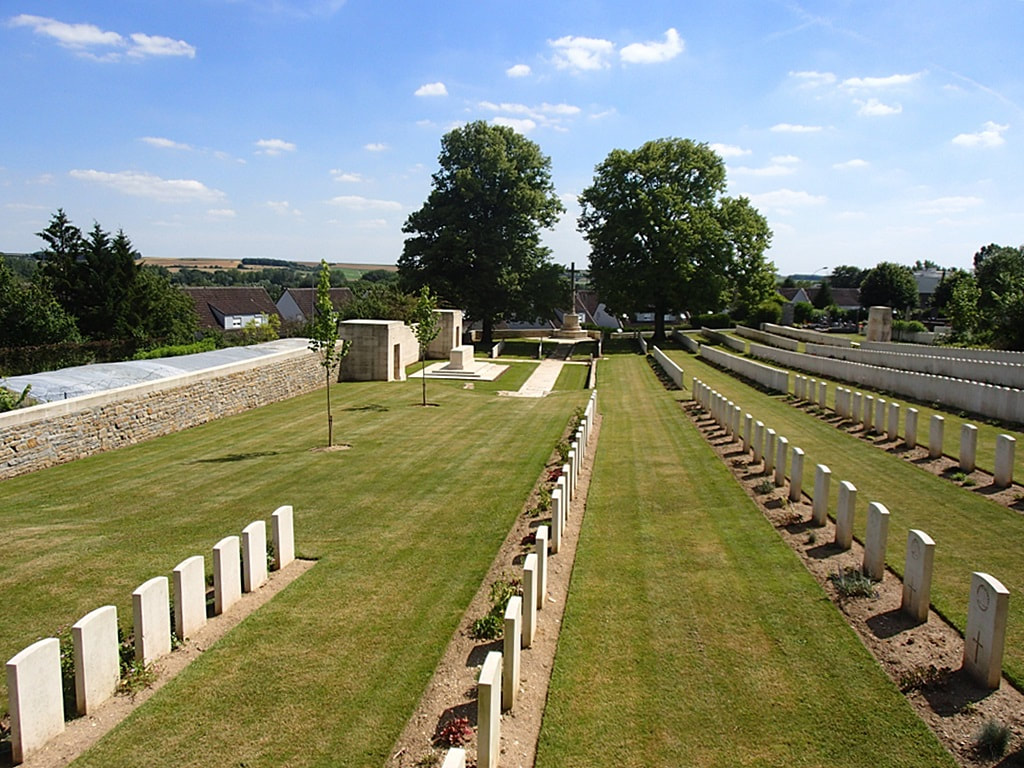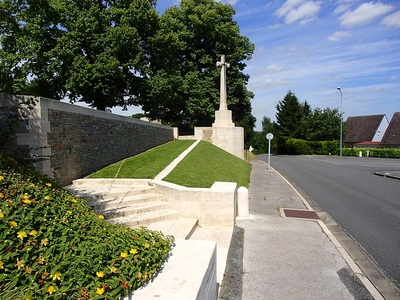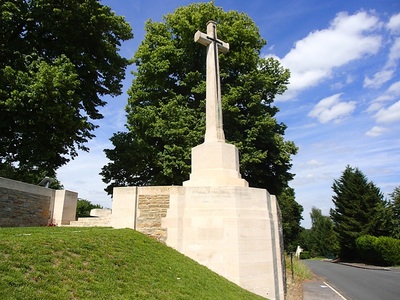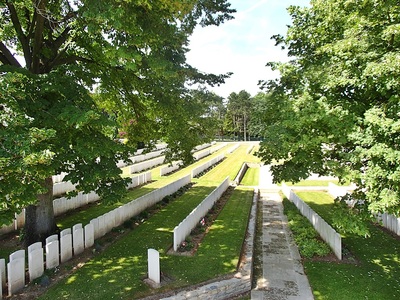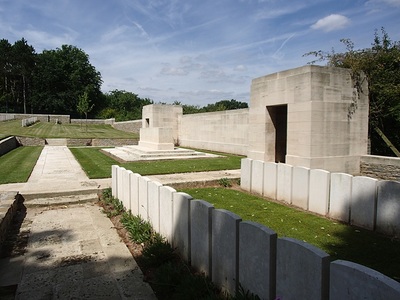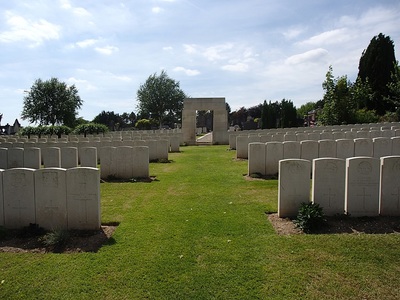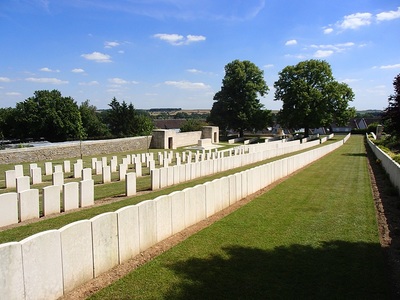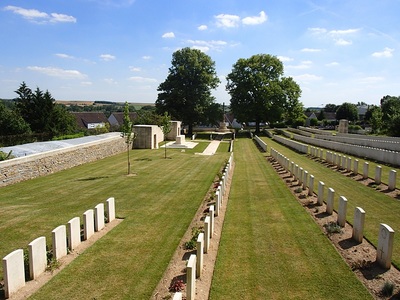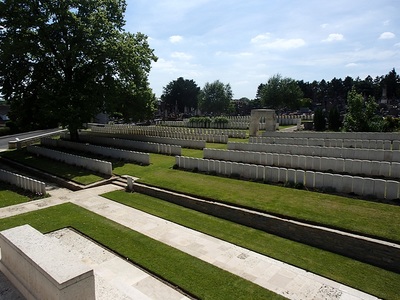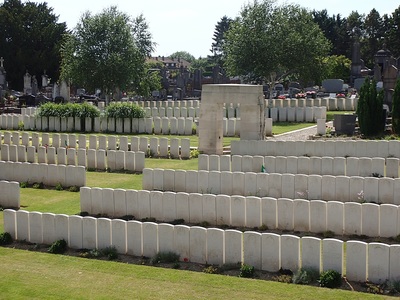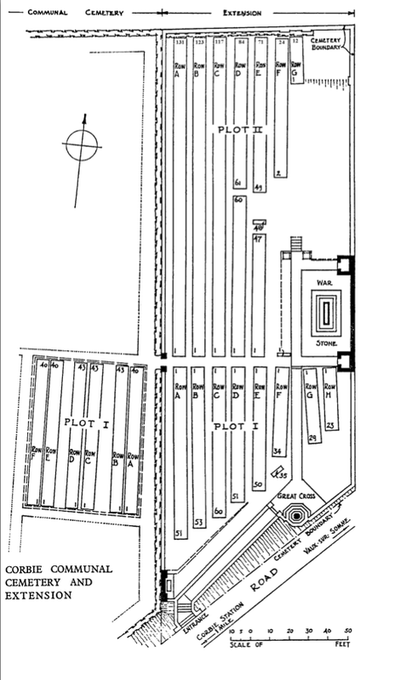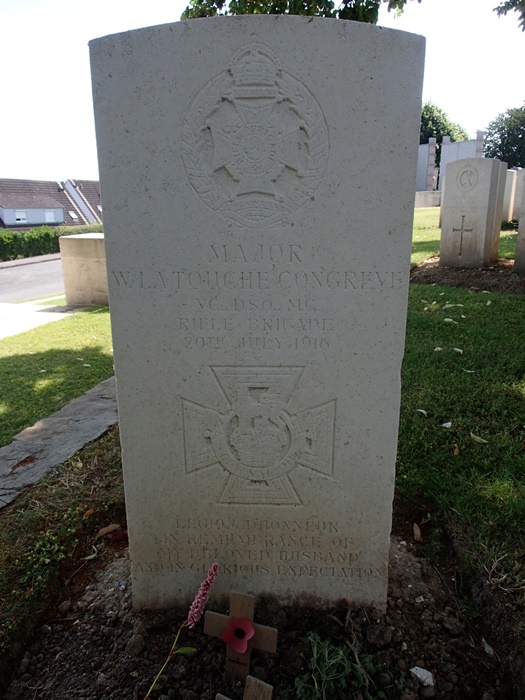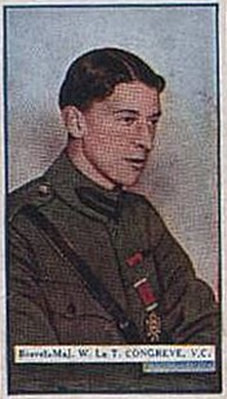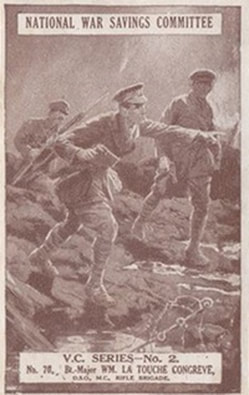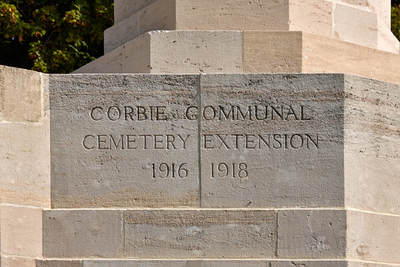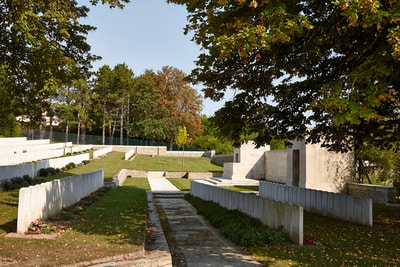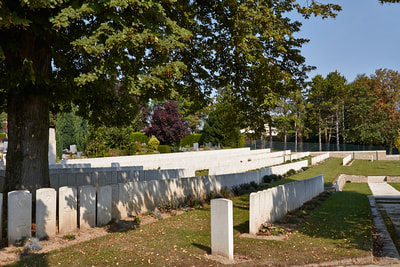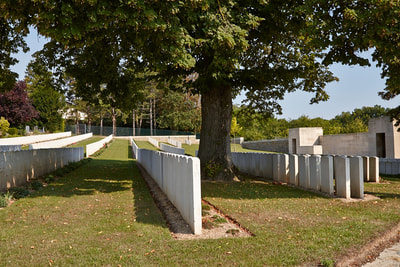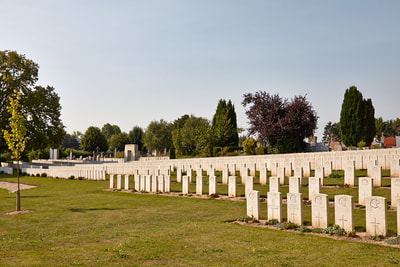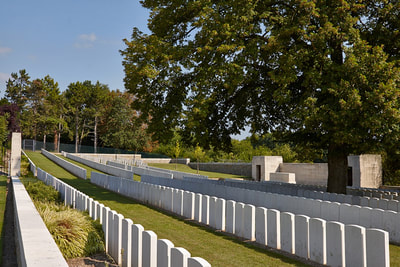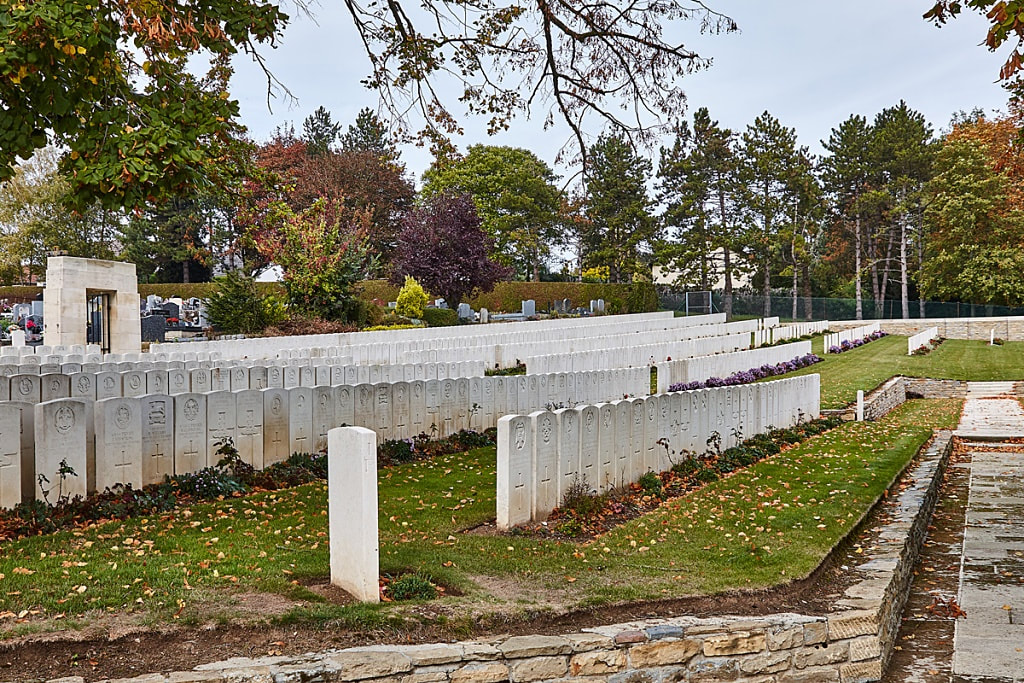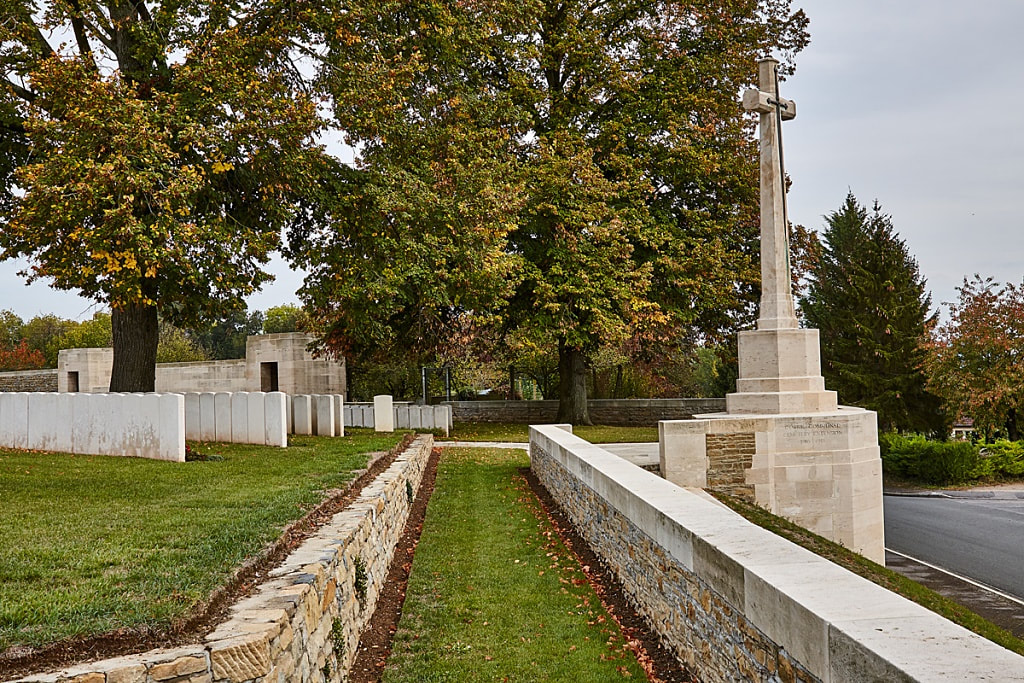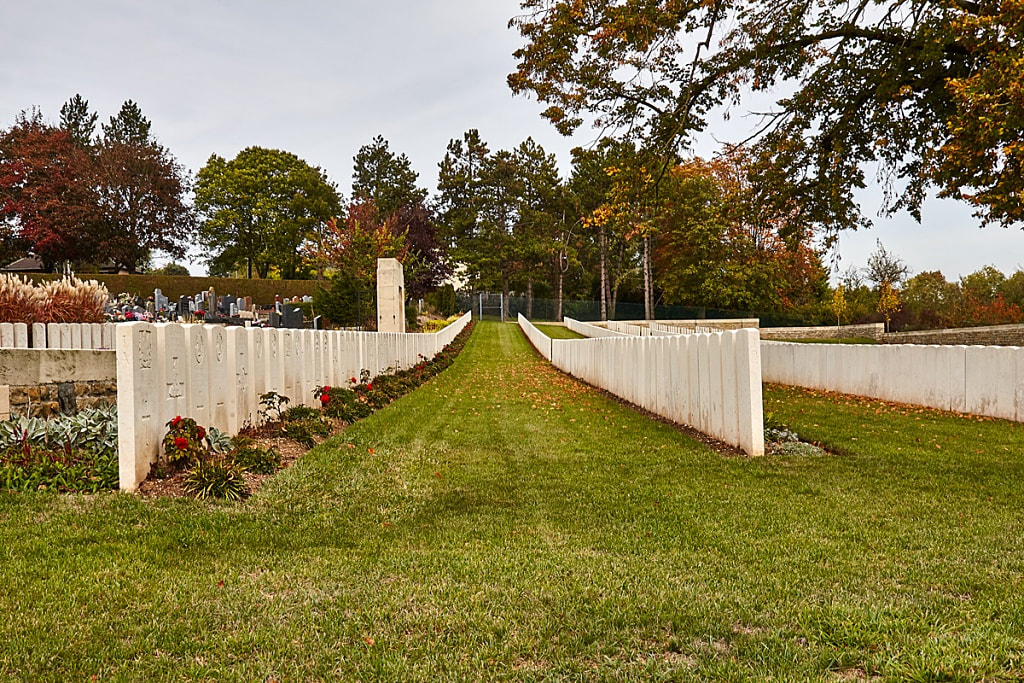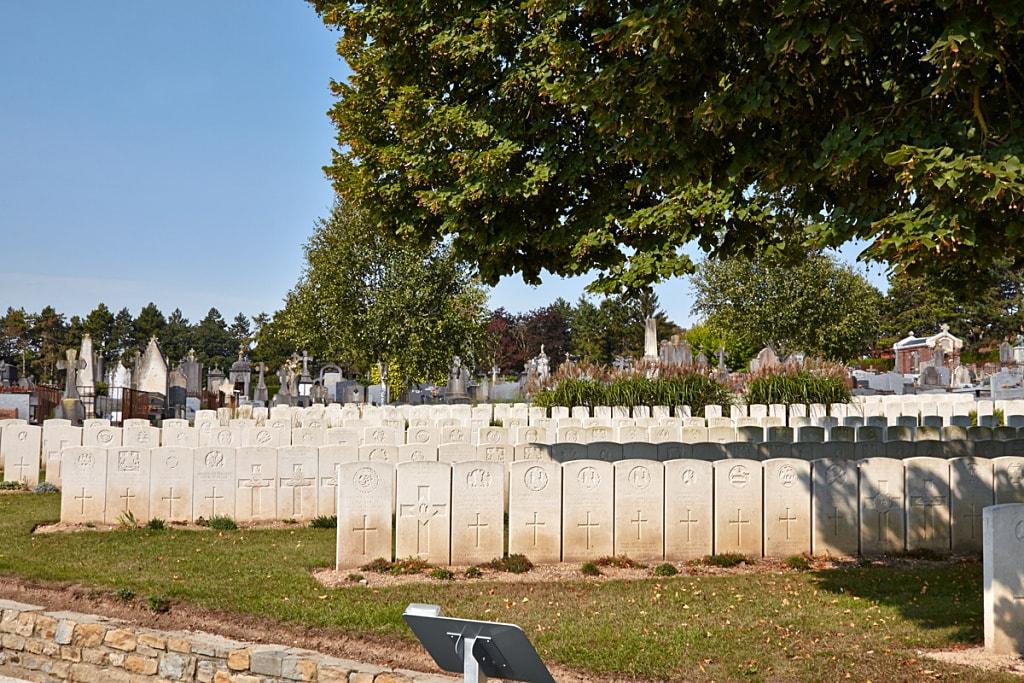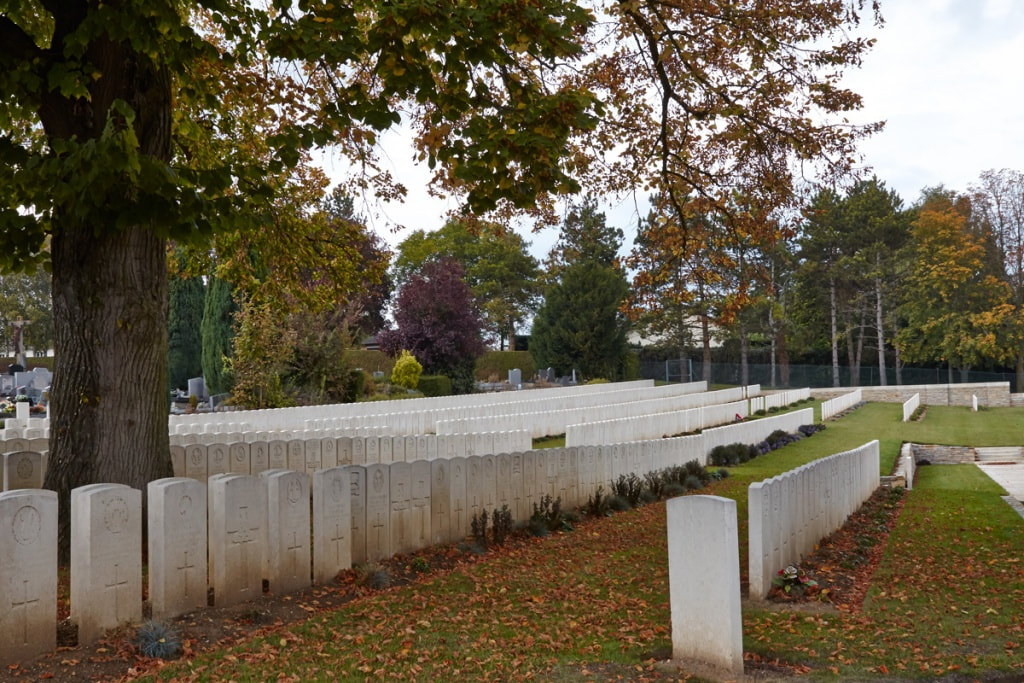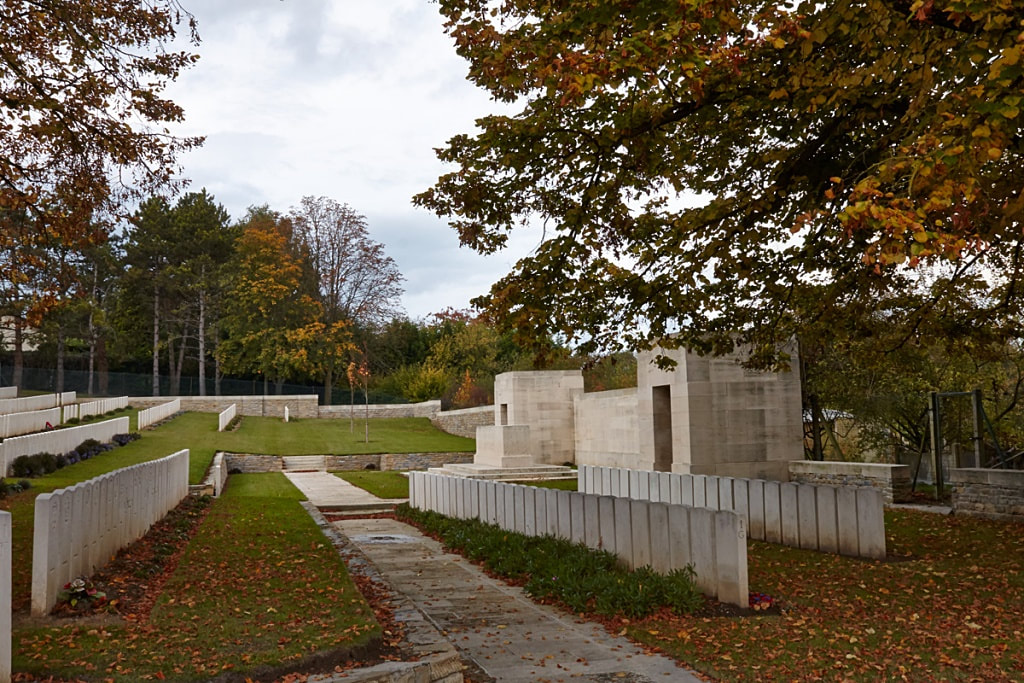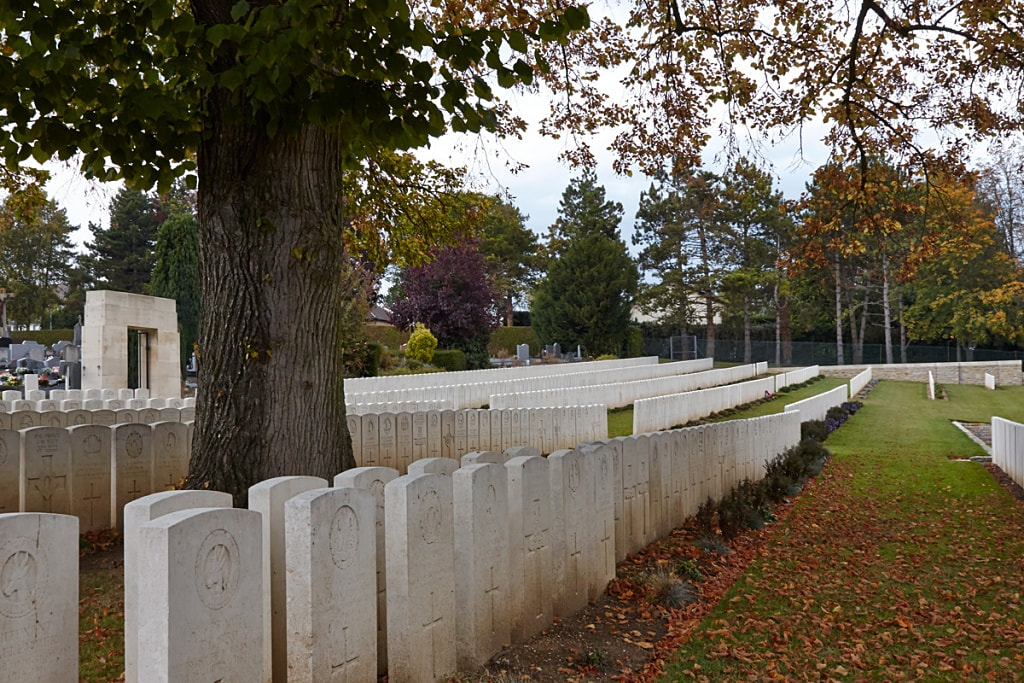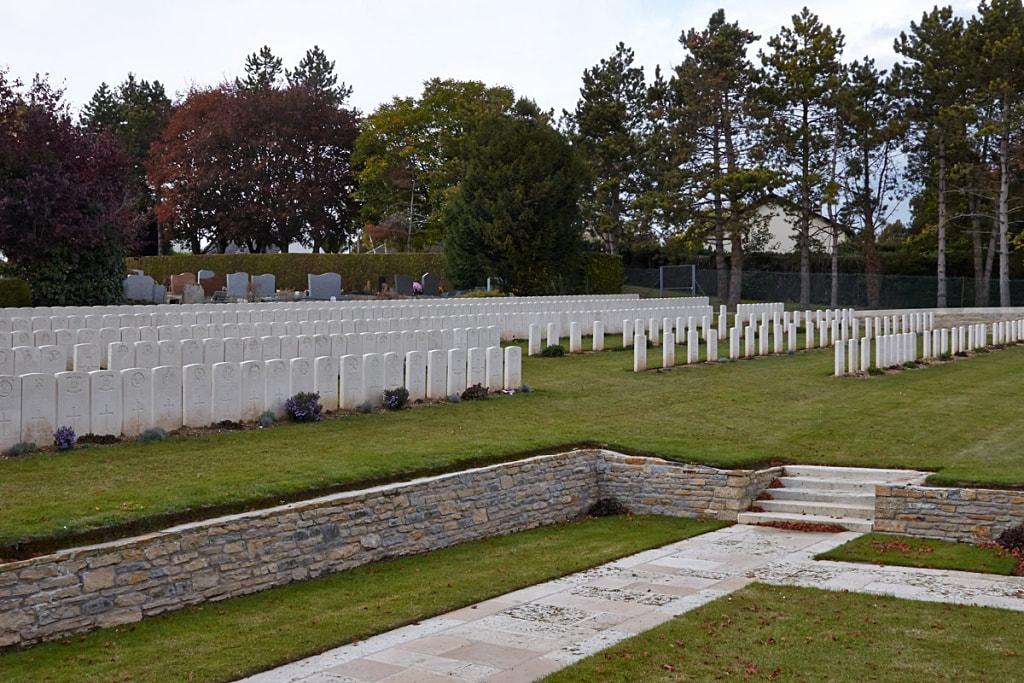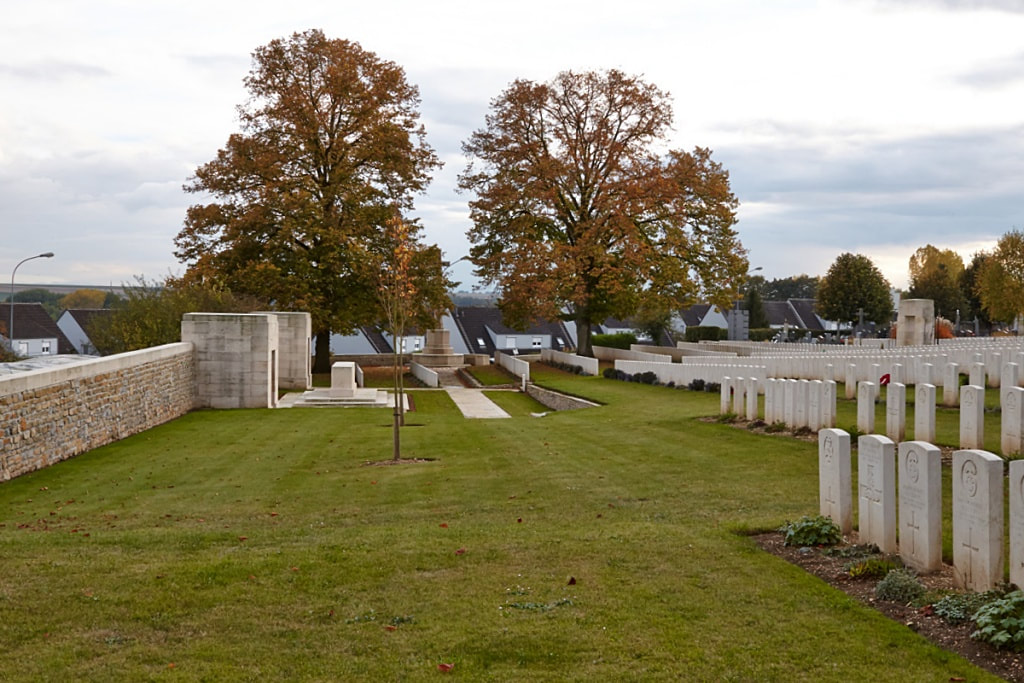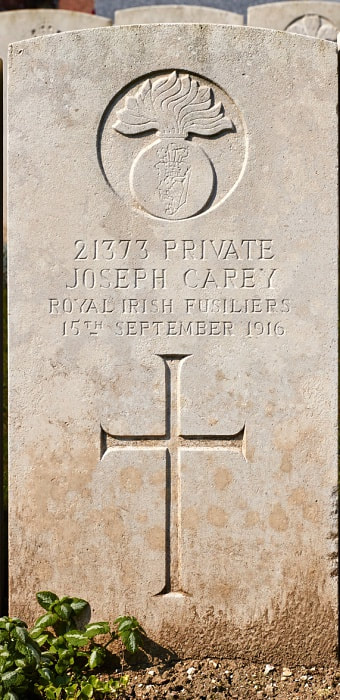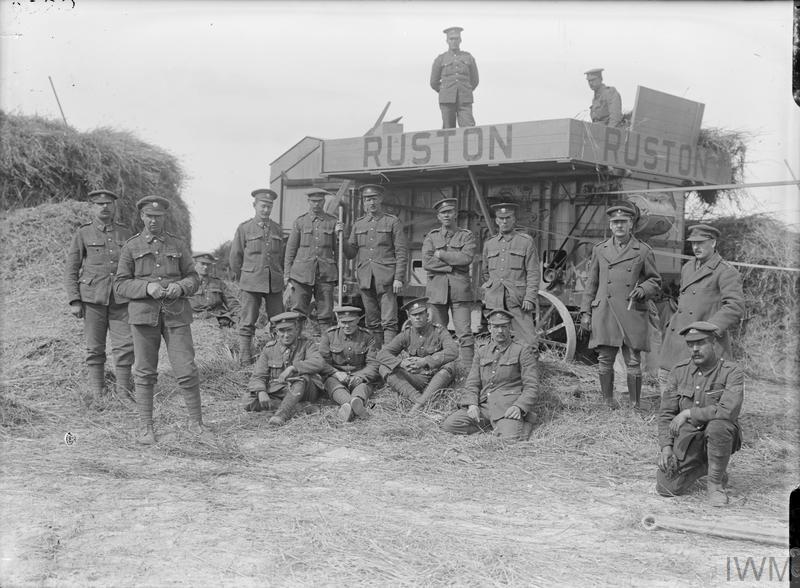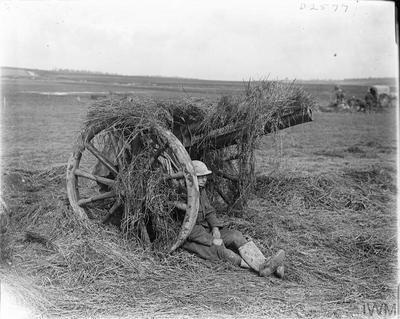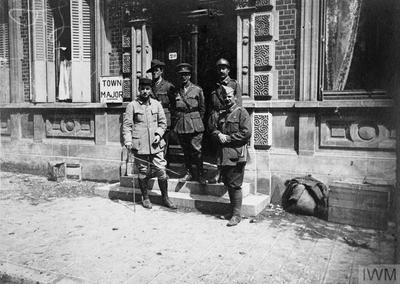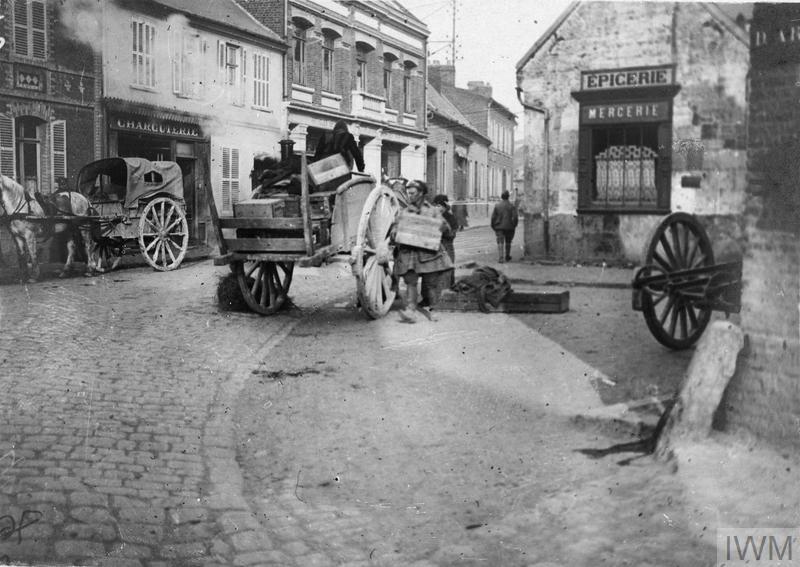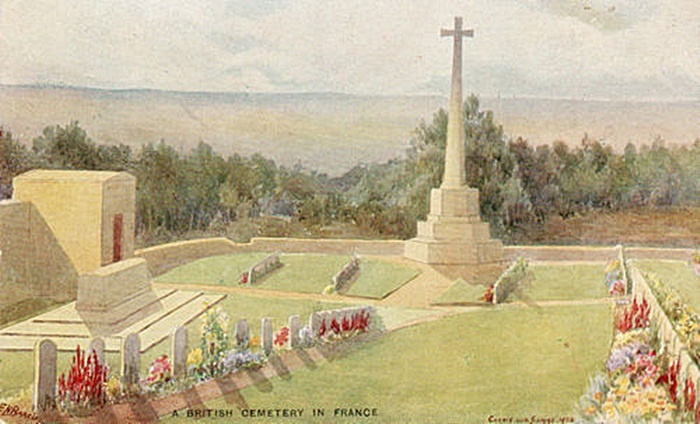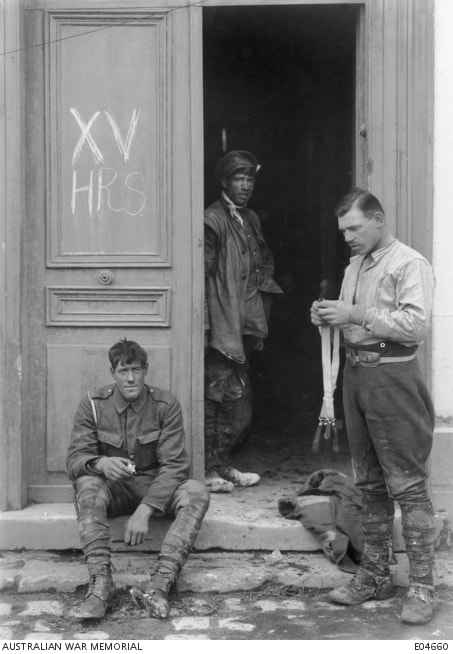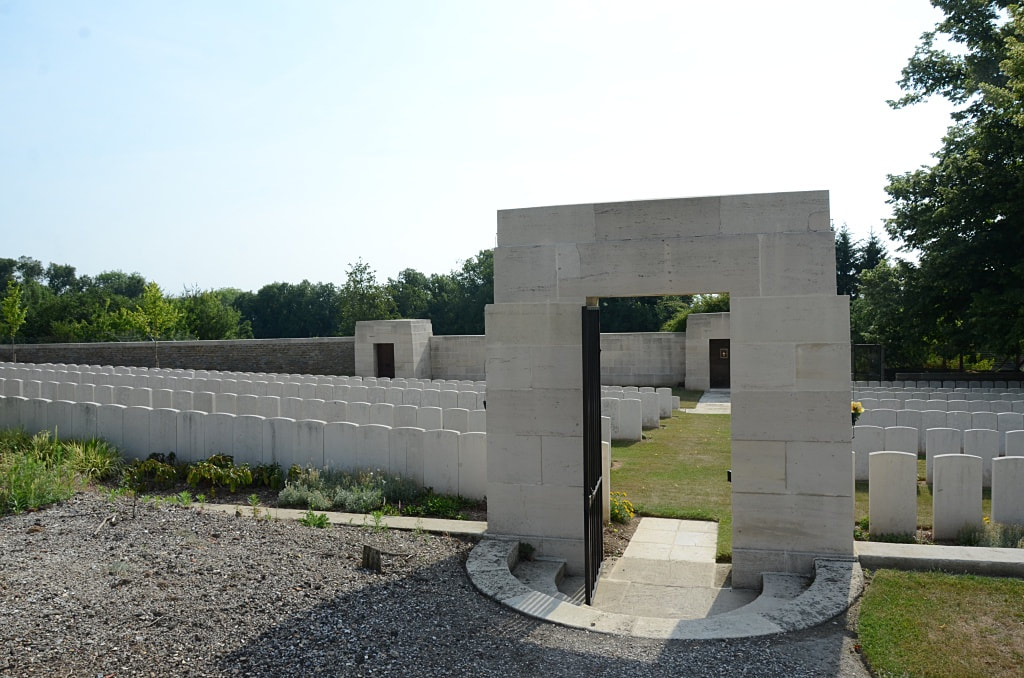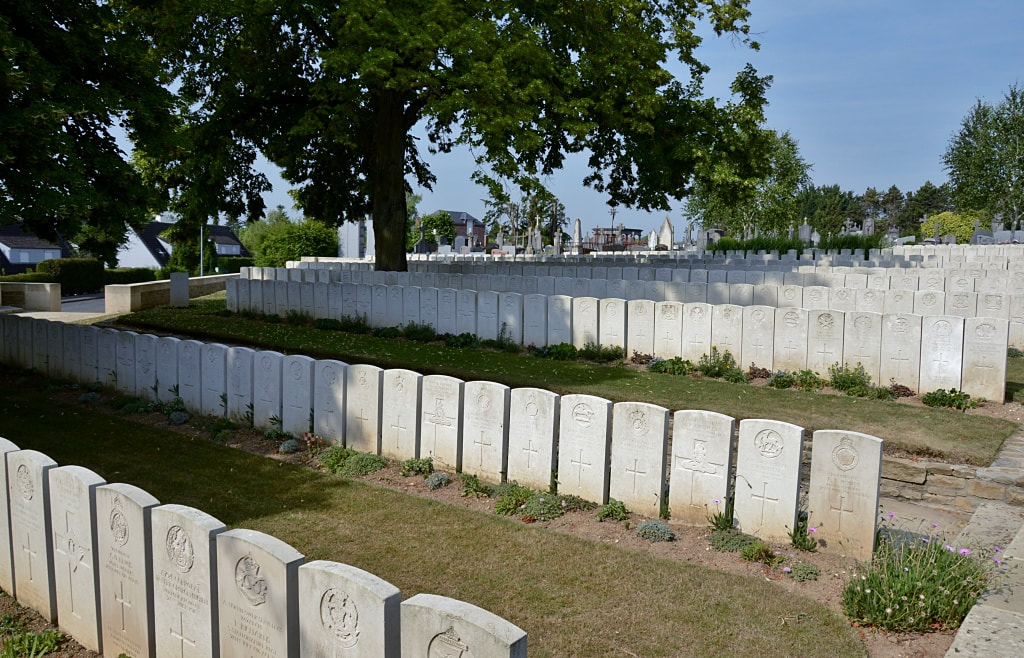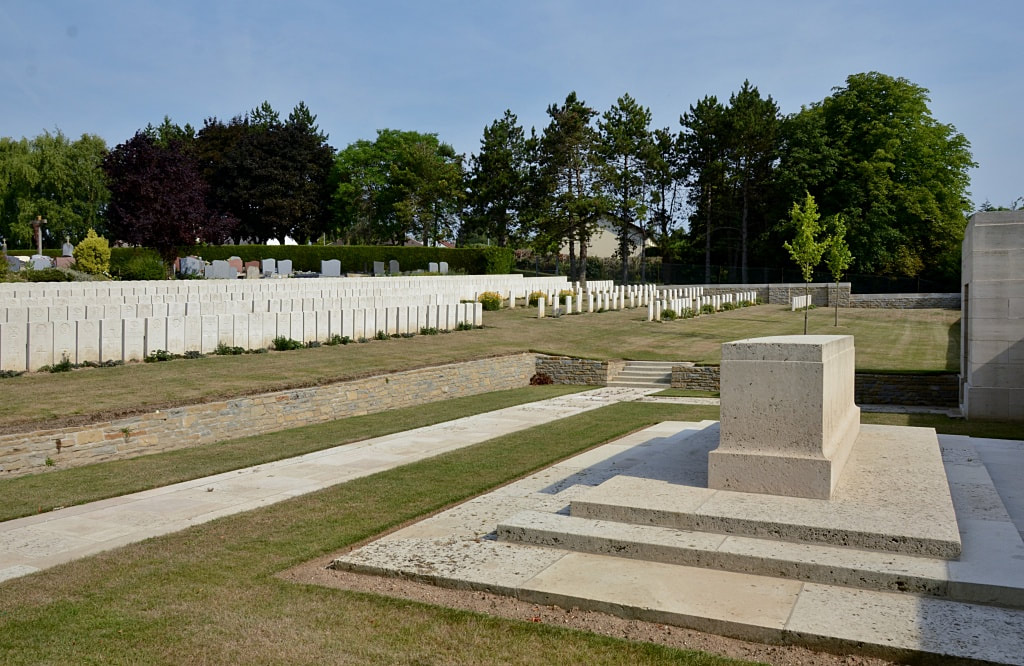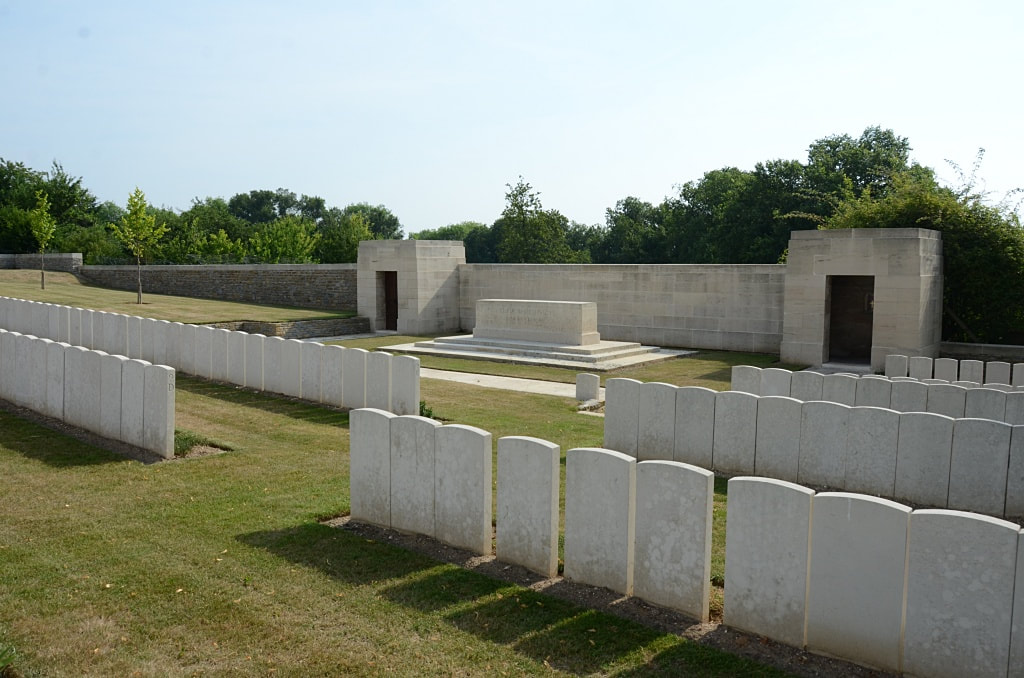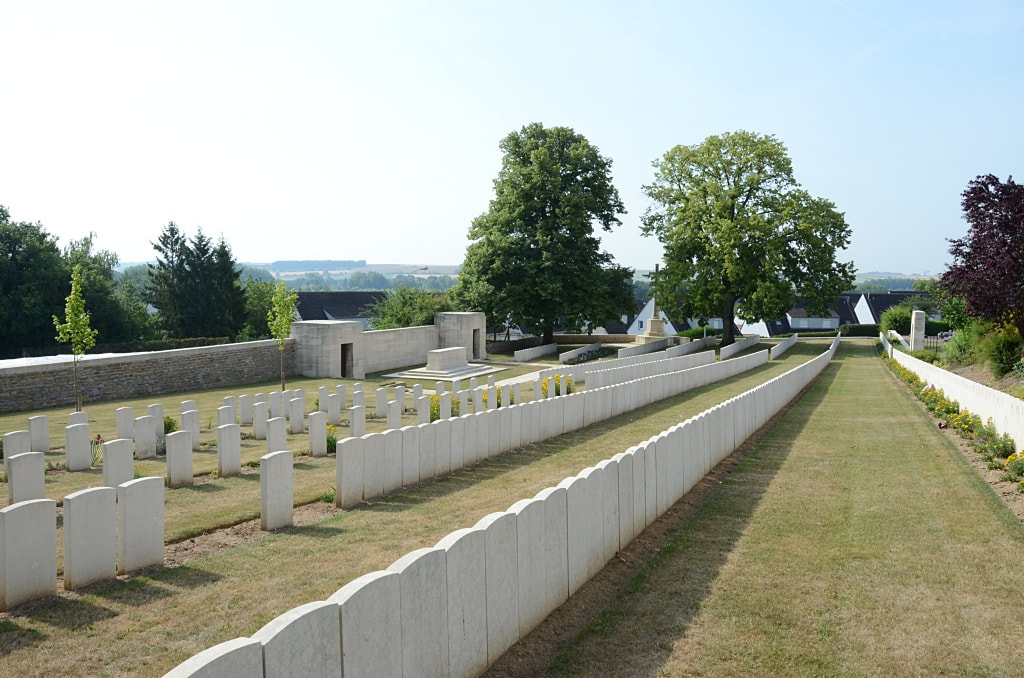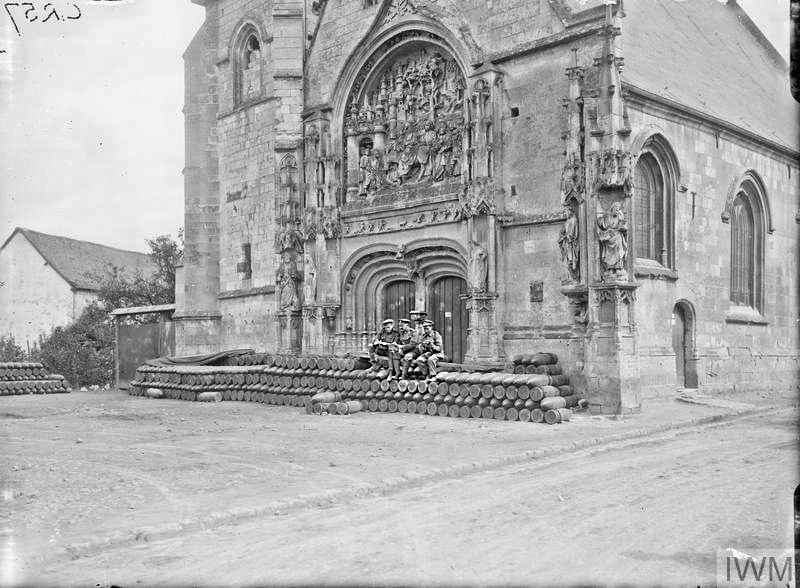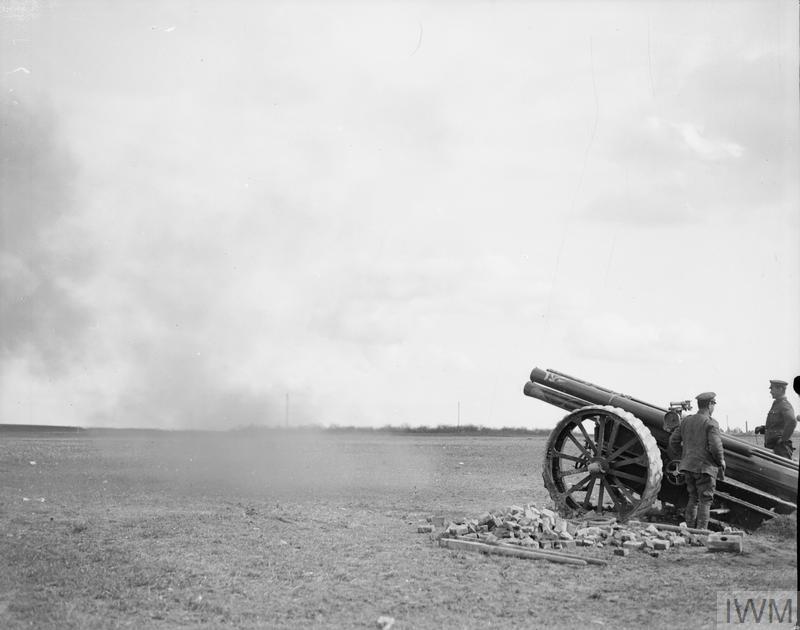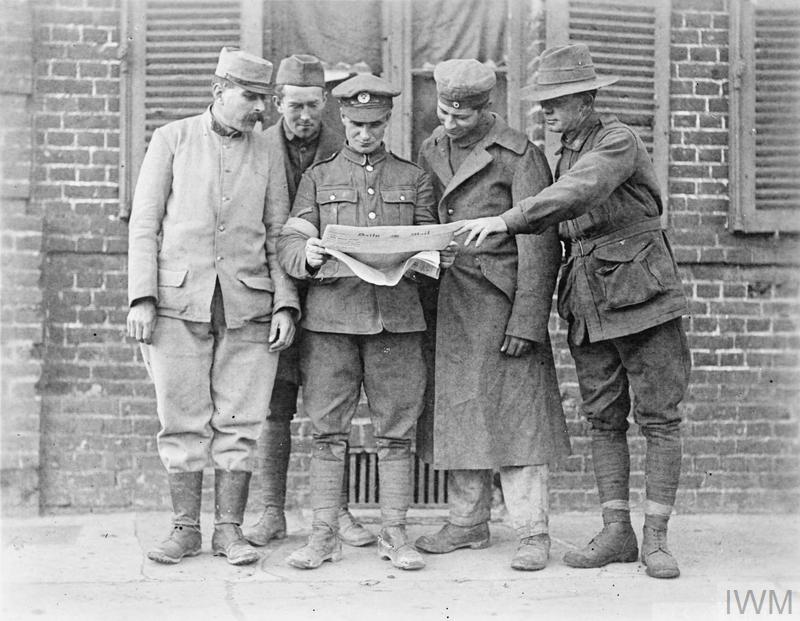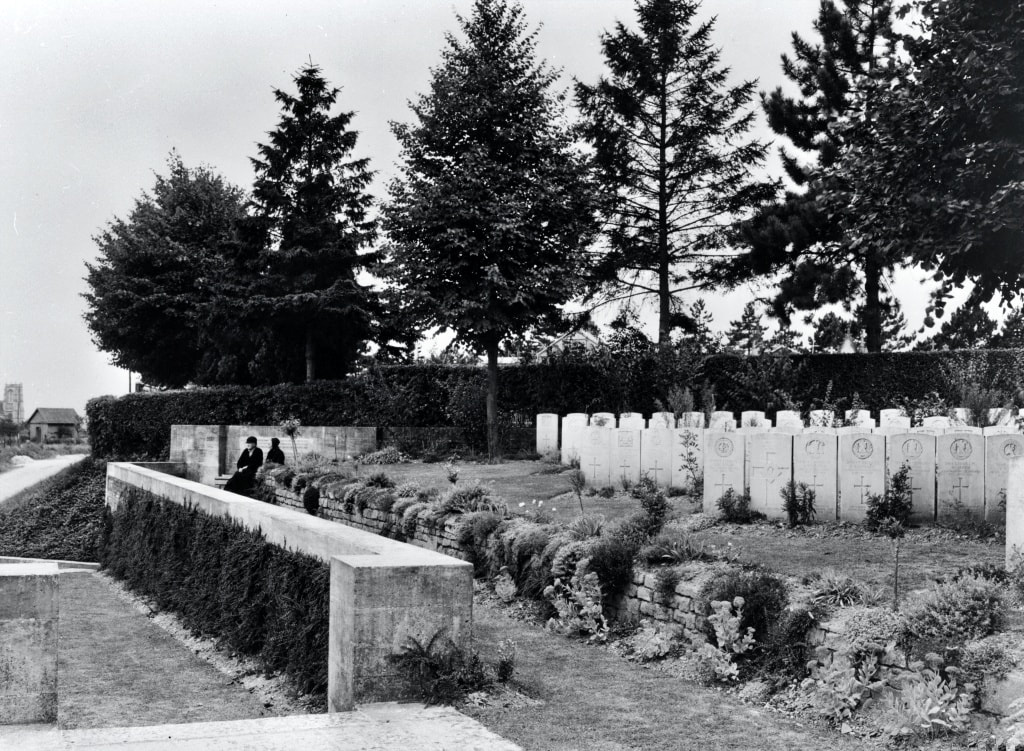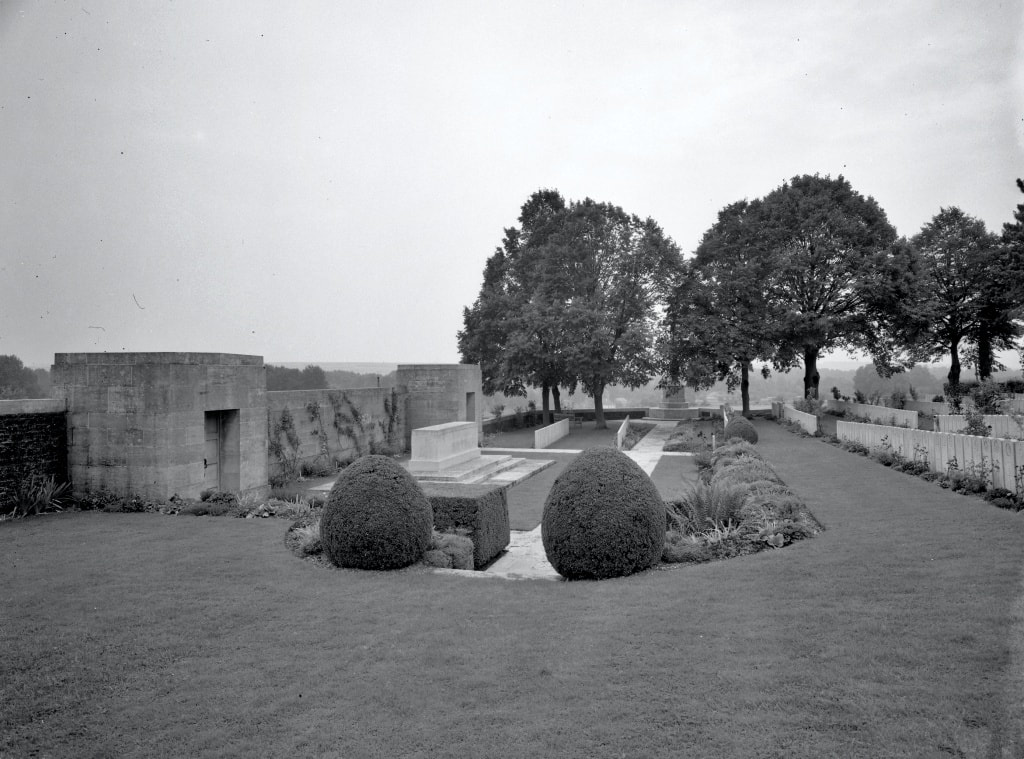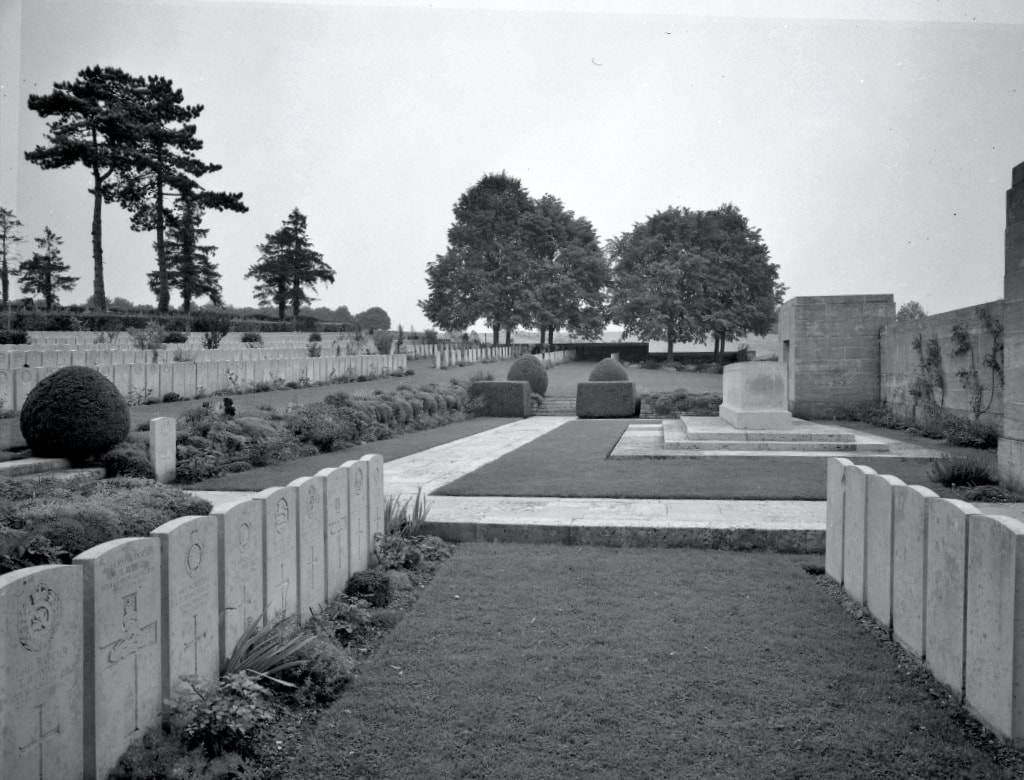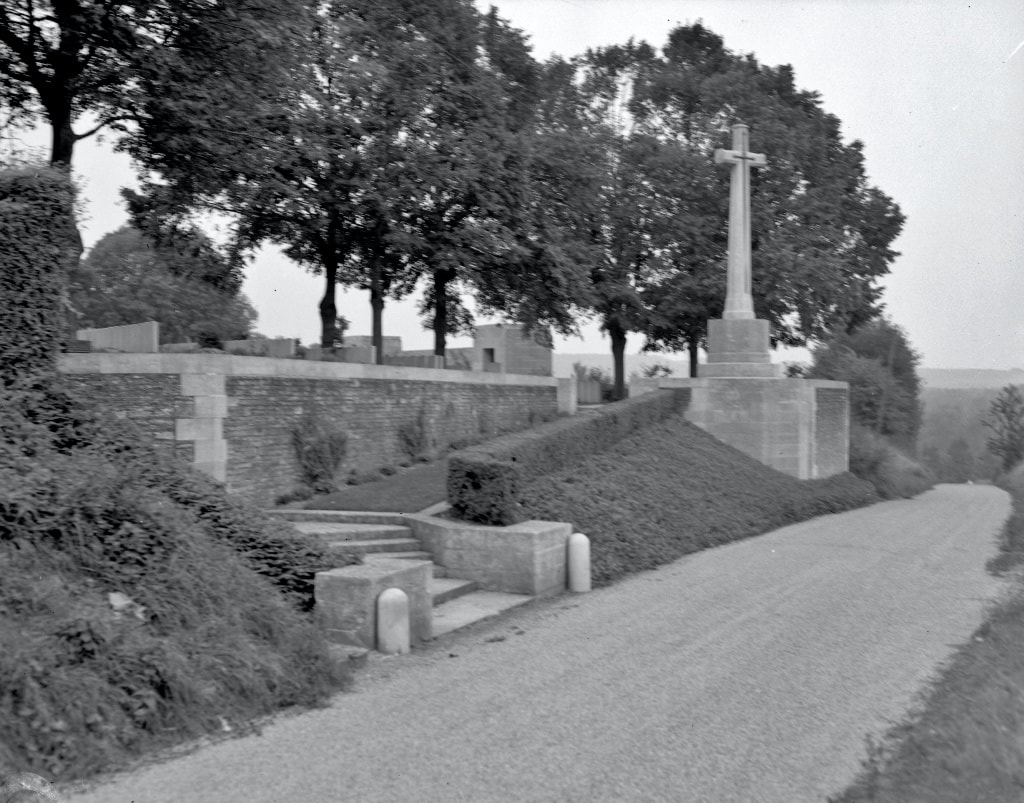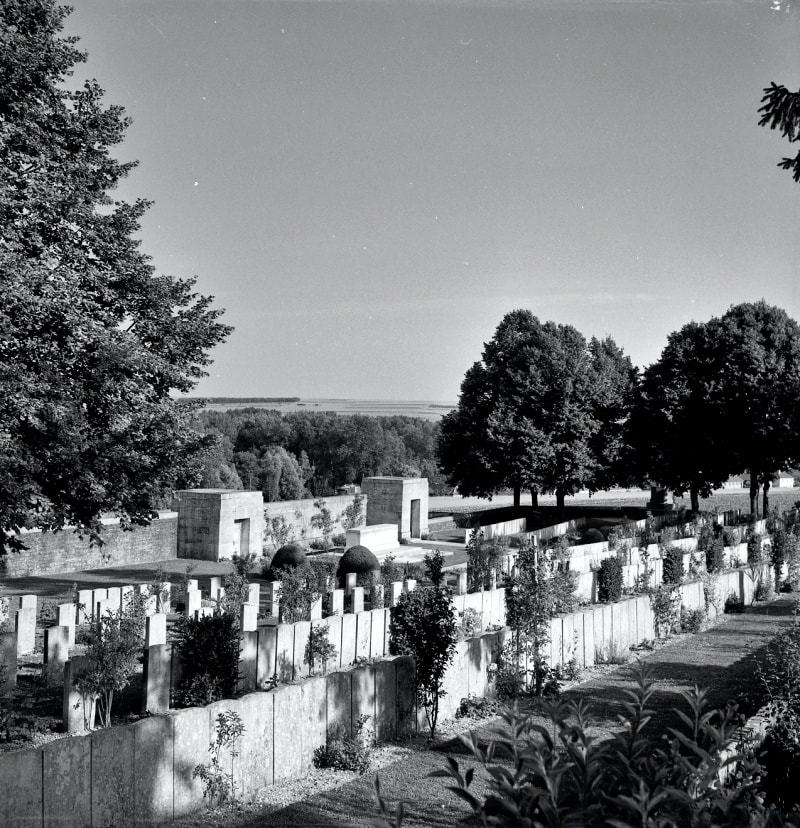CORBIE COMMUNAL CEMETERY EXTENSION
Somme
France
GPS Coordinates - Latitude: 49.9151, Longitude: 2.51941
Roll of Honour
Listed by Surname
Location Information
Corbie is a small town 15 kilometres east of Amiens.
Go north from the town centre taking the D1 (Rue Gambetta) in the direction of Bray. You will arrive at a set of traffic lights with the hospital diagonally on your left. Continue, taking the second turning on your right onto the Rue des Longues Vignes (VC6). The cemetery lies about 800 metres on the left and the extension is east of the Communal Cemetery.
Visiting Information
Wheelchair access with some difficulty.
Historical Information
Corbie was about 20 kilometres behind the front when Commonwealth forces took over the line from Berles-au-Bois southward to the Somme in July 1915. The town immediately became a medical centre, with Nos 5 and 21 Casualty Clearing Stations based at La Neuville (the suburb across the Ancre) until October 1916 and April 1917 respectively. In November 1916 the front moved east, but the German advance in the Spring of 1918 came within 10 kilometres of the town and brought with it field ambulances of the 47th Division and the 12th Australian Field Ambulance.
The communal cemetery was used for burials until May 1916, when the plot set aside was filled and the extension opened. The majority of the graves in the extension are of officers and men who died of wounds in the 1916 Battle of the Somme. The remainder relate to the fighting of 1918.
The communal cemetery contains 250 First World War burials, the extension 925.
The extension was designed by Charles Holden
Total Burials: 925.
Identified Casualties: United Kingdom 839, Australia 58, South Africa 27, Germany 1. Total 925.
Corbie is a small town 15 kilometres east of Amiens.
Go north from the town centre taking the D1 (Rue Gambetta) in the direction of Bray. You will arrive at a set of traffic lights with the hospital diagonally on your left. Continue, taking the second turning on your right onto the Rue des Longues Vignes (VC6). The cemetery lies about 800 metres on the left and the extension is east of the Communal Cemetery.
Visiting Information
Wheelchair access with some difficulty.
Historical Information
Corbie was about 20 kilometres behind the front when Commonwealth forces took over the line from Berles-au-Bois southward to the Somme in July 1915. The town immediately became a medical centre, with Nos 5 and 21 Casualty Clearing Stations based at La Neuville (the suburb across the Ancre) until October 1916 and April 1917 respectively. In November 1916 the front moved east, but the German advance in the Spring of 1918 came within 10 kilometres of the town and brought with it field ambulances of the 47th Division and the 12th Australian Field Ambulance.
The communal cemetery was used for burials until May 1916, when the plot set aside was filled and the extension opened. The majority of the graves in the extension are of officers and men who died of wounds in the 1916 Battle of the Somme. The remainder relate to the fighting of 1918.
The communal cemetery contains 250 First World War burials, the extension 925.
The extension was designed by Charles Holden
Total Burials: 925.
Identified Casualties: United Kingdom 839, Australia 58, South Africa 27, Germany 1. Total 925.
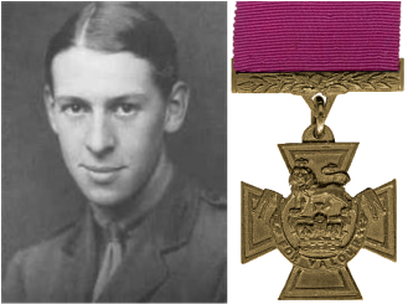
Major William La Touche Congreve, V. C., D. S. O., M. C., Mentioned in Despatches.
Rifle Brigade, killed in action 20th July 1916, aged 25. Plot I. F. 35. Legion of Honour.
Son of Lt.-Gen. Sir Walter Congreve, V.C., K.C.B., M.V.O., and Lady Congreve, of Chartley Castle, Staffs.; husband of Pamela Congreve, of 15, Queen Anne's Gate, London.
Citation: An extract from the London Gazette, dated 24th October, 1916 records the following: "For most conspicuous bravery during a period of fourteen days preceding his death in action. This officer constantly performed acts of gallantry and showed the greatest devotion to duty, and by his personal example inspired all those around him with confidence at critical periods of the operations. During preliminary preparations for the attack he carried out personal reconnaissance's of the enemy lines, taking out parties of officers and non- commissioned officers for over 1,000 yards in front of our line, in order to acquaint them with the ground. All these preparations were made under fire. Later, by night, Major Congreve conducted a battalion to its position of employment, afterwards returning to it to ascertain the situation after assault. He established himself in an exposed forward position from where he successfully observed the enemy, and gave orders necessary to drive them from their position. Two days later, when Brigade Headquarters was heavily shelled and many casualties resulted, he went out and assisted the medical officer to remove the wounded to places of safety, although he was himself suffering severely from gas and other shell effects. He again on a subsequent occasion showed supreme courage in tending wounded under heavy shell fire. He finally returned to the front line to ascertain the situation after an unsuccessful attack, and whilst in the act of writing his report, was shot and killed instantly."
Rifle Brigade, killed in action 20th July 1916, aged 25. Plot I. F. 35. Legion of Honour.
Son of Lt.-Gen. Sir Walter Congreve, V.C., K.C.B., M.V.O., and Lady Congreve, of Chartley Castle, Staffs.; husband of Pamela Congreve, of 15, Queen Anne's Gate, London.
Citation: An extract from the London Gazette, dated 24th October, 1916 records the following: "For most conspicuous bravery during a period of fourteen days preceding his death in action. This officer constantly performed acts of gallantry and showed the greatest devotion to duty, and by his personal example inspired all those around him with confidence at critical periods of the operations. During preliminary preparations for the attack he carried out personal reconnaissance's of the enemy lines, taking out parties of officers and non- commissioned officers for over 1,000 yards in front of our line, in order to acquaint them with the ground. All these preparations were made under fire. Later, by night, Major Congreve conducted a battalion to its position of employment, afterwards returning to it to ascertain the situation after assault. He established himself in an exposed forward position from where he successfully observed the enemy, and gave orders necessary to drive them from their position. Two days later, when Brigade Headquarters was heavily shelled and many casualties resulted, he went out and assisted the medical officer to remove the wounded to places of safety, although he was himself suffering severely from gas and other shell effects. He again on a subsequent occasion showed supreme courage in tending wounded under heavy shell fire. He finally returned to the front line to ascertain the situation after an unsuccessful attack, and whilst in the act of writing his report, was shot and killed instantly."
Images in this gallery © Geerhard Joos
Shot at Dawn
21373 Private Joseph Carey, 7th Bn. Royal Irish Fusiliers executed, 15th September 1916 for desertion. Plot 2. C. 86. Husband of May Carey, of 4 Julian's Place, Mayor St., Northwall, Dublin. During his 7 months’ service on the Western Front, he had twice gone absent to avoid serving in the trenches. (Putkowski, pp. 112-113)
21373 Private Joseph Carey, 7th Bn. Royal Irish Fusiliers executed, 15th September 1916 for desertion. Plot 2. C. 86. Husband of May Carey, of 4 Julian's Place, Mayor St., Northwall, Dublin. During his 7 months’ service on the Western Front, he had twice gone absent to avoid serving in the trenches. (Putkowski, pp. 112-113)
Images in this gallery © Johan Pauwels
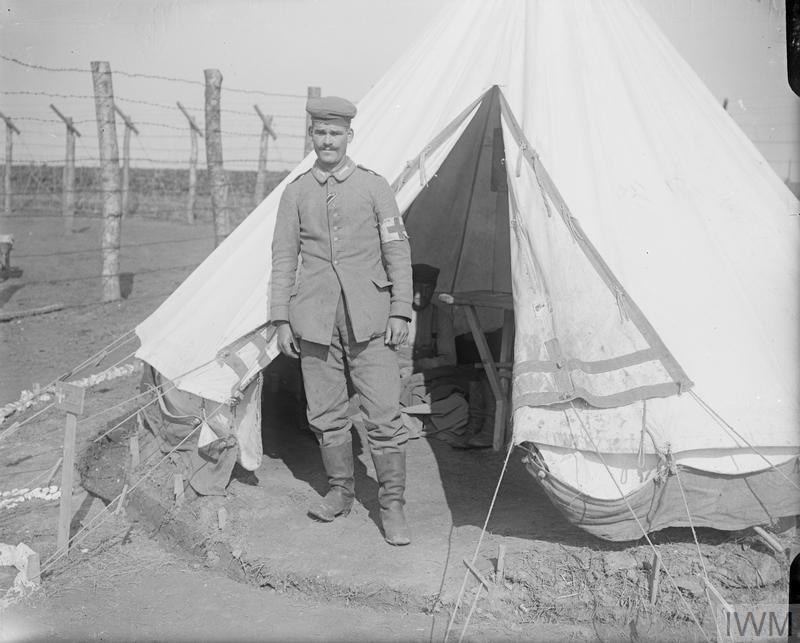
Prisoner of War Camp outside Corbie on the Bray-Corbie Road in September 1916. Photograph shows Carl Wimmer (a German Prisoner of War) who already had the Iron Cross and did good work bringing in British wounded soldiers under heavy shell fire. Watering place for horses on the Bray-Fricourt road, South West of St. George's Hill. September 1916. © IWM Q 4274

